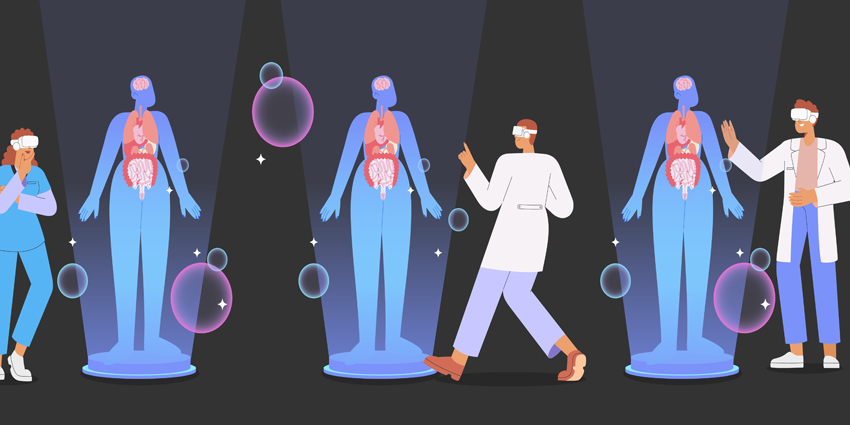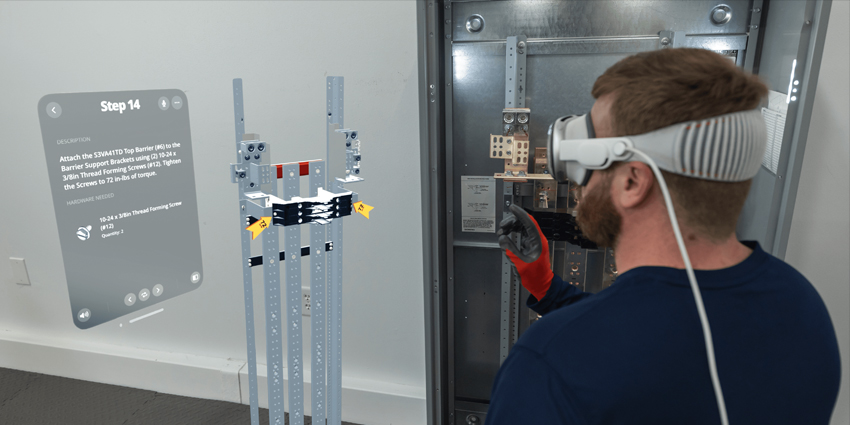In late August, the World Economic Forum (WEF) released its 11th annual Top 10 Emerging Technologies report, highlighting innovative technology solutions that positively impact society.
In its report, the WEF named the “Medical Metaverse” among its top emerging technologies of 2023 – alongside flexible batteries, genAI, sustainable aviation fuel, designer phages, wearable plant sensors, spatial optics, flexible neural electronics, sustainable computing, and AI-facilitated healthcare.
The Metaverse for healthcare sits alongside a respectable list of technologies unrelated to XR, which can generate positive change across a spectrum of people worldwide.
The news comes as many place doubt on the future of the Metaverse following a dip in general interest. However, the WEF report highlights a vertical market that may experience improved professional and patient outcomes thanks to emerging Metaverse applications.
Moreover, Microsoft is resparking its stake in an Industrial Metaverse, with plans to debut products in 2024. So, it appears the Metaverse may get its second wave of enterprise-based interest as the new year arrives.
Leveraging Gamification for Increasing Patient Outcomes
Emerging Metaverse services and integrated, immersive technologies grew alongside RT3D engines such as Unreal and Unity, two SDKs that developers commonly leverage for creating gaming content.
More recently, with the rise of enterprise-grade immersive software, RT3D engine service providers are promoting expanded use cases outside gaming.
Whether it’s Metaverse platforms, immersive training software, or digital twin design procedures, RT3D engines are bringing the power of interactive gaming technologies to new audiences.
The WEF notes how mental health facilities and groups already leverage gaming platforms to improve patient outcomes via interactable and immersive experiences.
Firms such as DeepWell, Ninja Theory, and TRIPP are assisting in improving engagement and reducing mental health concerns like anxiety and depression with wellness-focused XR experiences.
With shared XR wellness and telehealth services increasing in number, patients could also experience advanced augmented and emotional connections with distant individuals, improving the mental health of virtually connected groups of pre and post-surgery patients.
The WEF believes that the Medical Metaverse will soon allow patients to connect to therapeutic neurotechnologies, such as direct brain stimulation, to improve mental health outcomes.
Why is WEF Focusing on the Medical Metaverse?
The healthcare market provides the perfect place to showcase the power of Metaverse applications to wider end-users.
While many companies are making tremendous advances in immersive Metaverse technologies, auidences, end users, and investors are waiting for the right use case to come along and showcase the benefits of a promise-heavy Metaverse future.
The WEF report notes that tangible healthcare-based use cases benefit both patients and Metaverse service providers by highlighting a “practical, necessary application” – therefore driving Metaverse adoption.
Moreover, The WEF reports how Vivek Murthy, the United States Surgeon General, recently explained how excess screen and social media time leads to decreased psychological well-being, “one of the country’s most pressing public health issues of our time.”
The report notes that while excess screen time can lead to poor well-being, the same technology can improve the current mental health crisis if used correctly.
WEF explains that “screen time spent building connections in shared virtual spaces might help combat the growing mental health crisis as opposed to contributing to it.”
Moreover, the WEF notes how virtual shared Metaverse spaces can help improve the quality and reduce the psychological strain of digital interactions for professionals and consumers.
For healthcare use cases, the Medical Metaverse is growing. The WEF notes how the growing mental health crisis makes conditions “ripe” for Metaverse-based healthcare solutions.
With the increase in mental health-related queries, medical facilities cannot meet the increased demand, says the WEF.
The United States government also offers a federal reimbursement opportunity for tele-mental health services – including medical Metaverse services – to help meet the growing patient demand.
Additionally, the WEF explains that emerging healthcare technologies can support related use cases for patient outcomes such as prevention, diagnostics, therapy, education, and research.
HTC VIVE Joins the WEF Medical Metaverse Vision
In July, Pearly Chen, the Head of Business Development and Content Partnerships at VIVEPORT, HTC VIVE, spoke with the WEF to discuss the emerging presence of XR and the Metaverse in healthcare.
The HTC VIVE representative also reinforced how immersive solutions could ease patients into stressful surgeries or operations. “This really makes the patient experience not so scary anymore,” Chen remarked.
XR can assist in mental and physical therapy procedures. Chen notes that doctors can digitally deliver reliable services – commonplace in clinicians’ offices – to a patient’s home, dramatically improving healthcare services’ access and efficiency.
Moreover, according to Chen, doctors already use XR in healthcare institutions to help with high-stakes decision-making, including internal 3D visualisation and eventual patient communication, allowing doctors to explore RT3D visualisation of medical images. Therefore, doctors can improve communication between co-workers and patients with XR solutions.
Chen remarked:
This is one of my favourite examples of real-life value-add today. It’s not just about gaming entertainment; it’s something that can be done exponentially better using this immersive interface in artificial intelligence tools.
Chen also noted that currently, several healthcare professionals still use 2D resources to assist with decision-making, adding:
Through a tool like the surgical theatre that uses AI to take in all these different 2D medical images that is available today and build them into a three-dimensional anatomy that is patient-specific – the doctor can now go into the patient’s brain or hearts together with the patient and understand together and also have a better plan of surgery that increases the success of such an operation.
The HTC VIVE Head also noted that when professionals leverage XR as a communication tool, doctors and patients can “viscerally” understand an upcoming procedure – while improving a doctor’s efficiency.
Chen explained that when a doctor and patient are immersed in an immersive visualisation of anatomy, such as RT3D models of MRI or CT scans, together, they can understand fundamental aspects of one’s health.
A doctor and patient can “understand where the tumour is, where the arteries are, what is a better incision point,” which significantly improves patient outcomes, says Chen.
Championing XR Healthcare Startups
A range of XR companies, big and small, can assist in improving mental health patient outcomes with XR.
Digital storefronts like VIVEPORT can assist startups in operating alongside significant industry players to scale unique, purpose-built healthcare applications.
Chen explained that “so many different startups” are distributing tools for healthcare workers. The solutions can improve professional and student interactions across medical schools and hospitals “in a local scalable way” that increases patient outcomes.
Chen also said:
So there’s so many different ways that these start-ups that we back are really making an impact through their innovative products and go to market.
At the time, Chen highlighted an example of startup success within the XR healthcare solutions provider space: Mind VR. The firm brings shared VR experiences into senior homes and assisted living environments to avoid isolation, mental unhappiness, anxiety, and depression.







